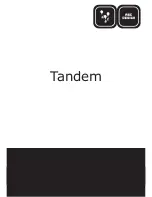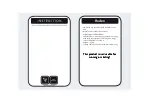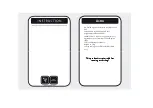
CHAPTER 10: THEORY OF OPERATION
OPERATING CONDITION CHARACTERISTICS
L90 LINE CURRENT DIFFERENTIAL SYSTEM – INSTRUCTION MANUAL
10-19
10
10.2.2 Trip decision example
Assume the following settings:
•
Slope 1: S
1
= 10%
•
Slope 2: S
2
= 10%
•
Breakpoint: BP = 5 pu secondary
•
Pickup: P = 0.5 pu
Assume the following local and remote currents:
•
Local current: I
local
= 4.0 pu
∠
0°
•
Remote current: I
remote
= 0.8 pu
∠
180°
The assumed condition is a radial line with a high resistance fault, with the source at the local end only, and through a
resistive load current. The operating current is:
Eq. 10-34
Since the current at both ends is less than the breakpoint value of 5.0, the equation for two-terminal mode is used to
calculate restraint as follows:
Eq. 10-35
where
σ
= 0, assuming a pure sine wave.
10.2.3 Trip decision test
The trip condition is shown.
Eq. 10-36
The use of the
CURRENT DIFF PICKUP
,
CURRENT DIFF RESTRAINT 1
,
CURRENT DIFF RESTRAINT 2
, and
CURRENT DIFF BREAK PT
settings are discussed in the Current Differential section of the Settings chapter.
The following figure shows how the L90 settings affect the restraint characteristics. The local and remote currents are 180°
apart, which represents an external fault. The breakpoint between the two slopes indicates the point where the restraint
area is becoming wider to override uncertainties from CT saturation, fault noise, harmonics, and so on. Increasing the
slope percentage increases the width of the restraint area.
















































